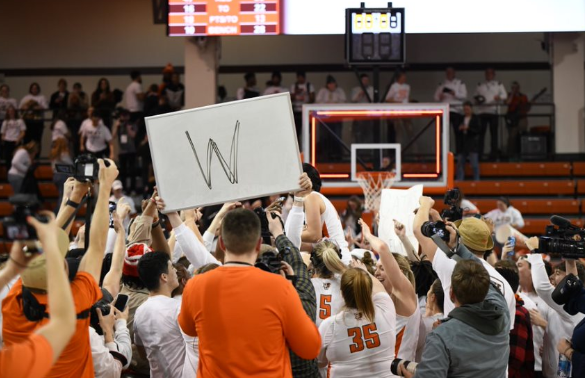Beginning Oct. 1, the Ohio Turnpike will allow for the use of E-ZPass technology to pay for tolls. Ohio is rather late to adopt the technology compared to other states with turnpike systems, so this move is a long time coming in terms of standardizing turnpike usage across the country.
For those unfamiliar with E-ZPass technology, it is a system that allows one to bypass the toll booths on the turnpike by placing a transponder in your windshield which registers as you pass through a toll booth. Instead of paying a fee to a toll collector each trip, the fee would be taken from a prepaid E-ZPass account registered to the transponder.
There are positives to this program. It will put an end to shelling out money each time a driver uses the Ohio Turnpike and fares will be cheaper than without E-ZPass. Additionally, the technology can be used in multiple states (for example, if one has an E-ZPass transponder from Ohio but travels on the Pennsylvania Turnpike, the toll for that trip can be taken out of the same E-ZPass account).
However, while the system could benefit drivers, problems may arise as a result of the E-ZPass system’s implementation in Ohio, both due to the Ohio Turnpike Commission (OTC) and the E-ZPass system.
One notable issue is the lack of E-ZPass-designated toll booth lanes at every stop. Not having express lanes at every location will eliminate a supposed advantage of the E-Z Pass system, because while people can speed through themselves, they will have to wait behind those paying with cash.
The OTC’s Web site says that as driver participation increases, more E-ZPass-only lanes may be installed at the less-trafficked exits initially lacking them. However, this move could make people believe that an E-ZPass won’t actually save time in a commute and people may be turned off by the idea of using them before the program can expand.
Additionally, the OTC has another plan to make E-ZPass appealing. Those who use the system will receive a discount in their rates compared to those paying with cash. However, the word ‘discount’ is a bit of a misnomer. Beginning Oct. 1, the rates for those drivers who do not use E-ZPass will rise, while those with E-ZPass will pay the current rates. For example, a trip from Perrysburg to the I-90 exit in Elyria Township will cost $4.75, while those with E-ZPass will pay the current $3.25.
The OTC is passing their plan off as a ‘discount’ for the drivers who take advantage of E-Z Pass, but the implementation of this system is only a way to vastly increase the rates of those who do not use it. They are imploring the same tactics department stores use before a sale: give the customer the impression they’re saving money by increasing the price before discounting the product.
While one may pay less with E-ZPass, the money comes from a pre-paid account whose balance is deducted upon each scan (the $0.75 monthly transponder rental fee is also taken from this account). A credit card is required for an E-ZPass account, guaranteeing those without one will have to pay more for their trips. A minimum balance of $25.00 is required to open an E-ZPass account, and according to the OTC’s website, the credit card will be charged if a person’s account balance falls below $10.00.
This means that even people who make few trips on the turnpike will still have to give the OTC large amounts of money in their account. A college student who may only go home once or twice a semester will have to pay for multiple trips in their accounts, ensuring the OTC will have money invested by drivers in the program.
It is possible that creating a minimum account balance is a way to ensure the program isn’t a complete loss for the OTC. The Plain Dealer cites the Baltimore Sun in an article stating the Maryland Transportation Authority spends $1.9 million annually on maintaining unused transponder accounts. Therefore, the OTC is ensuring that those with transponders have spent at least $25 on the system, and they will have some money to operate.
The OTC is attempting to finance this new program and pass it off as a money saver, when in reality it is costing drivers more money. By overcharging occasional travelers and those unwilling to prepay for their travels, it can show that it is adapting to new changes in technology, but it is not doing so in a way that is customer friendly.
Respond to Marisha by leaving a comment below or email her at [email protected]‘

















